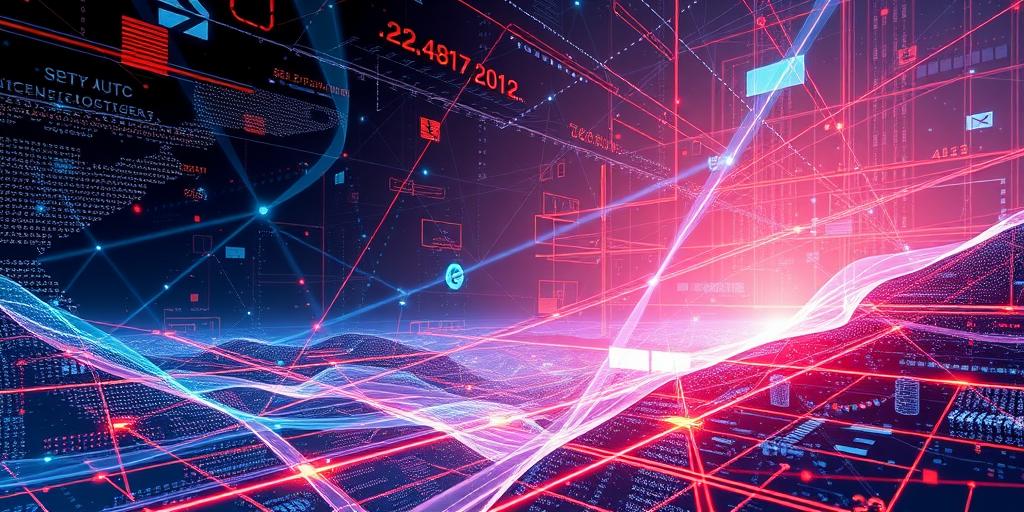The Intersection of AI and Cybersecurity in 2025
Artificial intelligence (AI) and cybersecurity are rapidly converging, creating both opportunities and challenges for organizations. By 2025, the integration of these two fields will be even more pronounced, transforming how we defend against cyber threats and how threat actors launch attacks. This article explores the key trends, applications, and implications of AI in cybersecurity by 2025.
AI-Powered Threat Detection
One of the most promising applications of AI in cybersecurity is threat detection. Traditional security systems rely on signature-based detection, which is effective against known threats but struggles with novel attacks. AI, particularly machine learning (ML), can analyze vast amounts of data to identify anomalous behavior and predict potential threats.
By 2025:
- Enhanced Anomaly Detection: AI algorithms will be more sophisticated in detecting subtle anomalies that indicate a cyberattack.
- Predictive Threat Intelligence: AI will provide more accurate predictions about emerging threats, allowing organizations to proactively defend against them.
- Automated Incident Response: AI will automate the initial response to security incidents, reducing response times and minimizing damage.
AI in Vulnerability Management
Identifying and addressing vulnerabilities is a critical aspect of cybersecurity. AI can automate vulnerability scanning and prioritization, helping organizations focus on the most critical weaknesses.
By 2025:
- Automated Vulnerability Scanning: AI-powered tools will automatically scan systems and applications for vulnerabilities.
- Risk-Based Prioritization: AI will assess the risk associated with each vulnerability, allowing security teams to prioritize remediation efforts based on potential impact.
- Predictive Patching: AI will predict which patches are most likely to address critical vulnerabilities, enabling more efficient patching strategies.
AI-Driven Security Automation
Security automation is essential for managing the increasing complexity of modern IT environments. AI can automate many routine security tasks, freeing up security professionals to focus on more strategic initiatives.
By 2025:
- Automated Security Configuration: AI will automate the configuration of security controls, ensuring consistent security policies across all systems.
- Adaptive Security Policies: AI will dynamically adjust security policies based on changes in the threat landscape.
- Automated Compliance Reporting: AI will automate the generation of compliance reports, reducing the burden of regulatory compliance.
The Dark Side: AI-Enabled Cyberattacks
While AI offers significant benefits for cybersecurity, it also presents new challenges. Threat actors are increasingly using AI to develop more sophisticated and effective attacks.
By 2025:
- AI-Powered Phishing Attacks: AI will generate highly convincing phishing emails that are difficult to detect.
- Automated Malware Development: AI will automate the creation of new malware variants, making it harder for security systems to keep up.
- AI-Driven Social Engineering: AI will analyze social media data to create highly targeted social engineering attacks.
Addressing the Challenges
To effectively leverage AI in cybersecurity and mitigate the risks, organizations need to address several challenges:
- Data Quality: AI algorithms require high-quality data to perform effectively. Organizations need to ensure that their data is accurate, complete, and relevant.
- Explainability: AI models can be complex and difficult to understand. Organizations need to ensure that their AI models are transparent and explainable.
- Skills Gap: There is a shortage of cybersecurity professionals with AI expertise. Organizations need to invest in training and development to build their AI cybersecurity capabilities.
Conclusion
By 2025, AI will be an integral part of cybersecurity. Organizations that embrace AI-powered security solutions will be better equipped to defend against cyber threats. However, they must also be aware of the risks associated with AI-enabled attacks and take steps to mitigate those risks. By addressing the challenges and investing in AI cybersecurity capabilities, organizations can harness the power of AI to create a more secure digital world.
